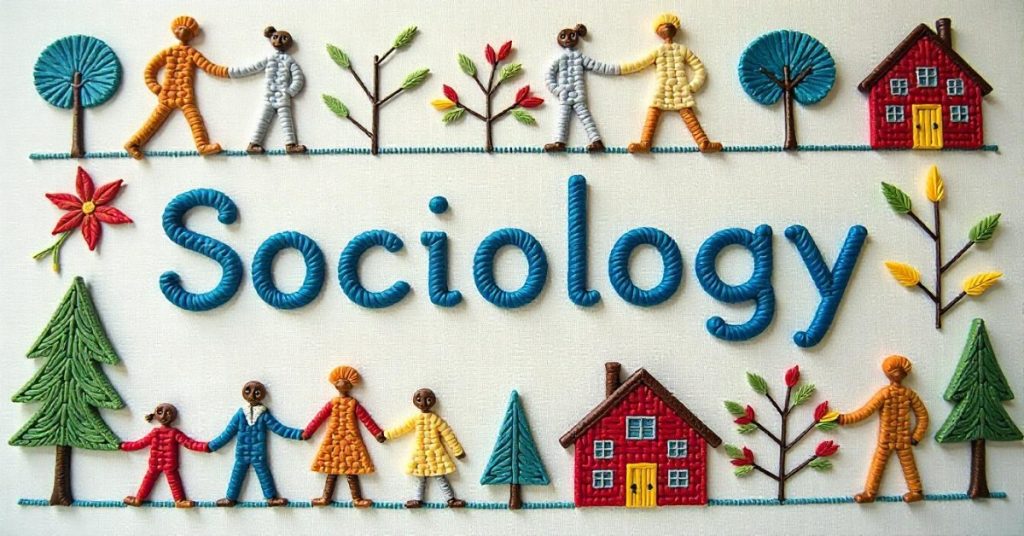Trying to choose between descriptive vs analytical research is like picking between a chai and a coffee—both have their perks, but it depends on what you’re craving. In the world of research, these two approaches serve distinct purposes, each shining in its own way. Whether you’re a student writing a descriptive vs analytical research essay, a sociologist diving into descriptive vs analytical research in sociology, or just curious about the difference between descriptive and analytical research, understanding their nuances is key to picking the right tool for your study.
This blog breaks down the descriptive research vs analytical research debate with clear explanations, descriptive vs analytical research examples, and tips on when to use each. With a sprinkle of humor and real-world insights, we’ll make sense of the compare descriptive and analytical research question, perfect for researchers or anyone needing a descriptive vs analytical research PDF. Let’s dive into the research brew and see which flavor suits your project!
What Is Descriptive Research?
Descriptive research is like taking a snapshot of a bustling Indian market—it captures what’s happening, who’s involved, and where things stand, without digging into why. It focuses on describing the characteristics, behaviors, or conditions of a subject using data like surveys, observations, or case studies.
- Key Features:
- Answers “what,” “who,” “when,” or “where” questions.
- Observes and records without manipulating variables.
- Common methods: Surveys, observational studies, case studies.
- Real Example:
A study counting how many students in a Delhi school use smartphones for learning (e.g., 70% use apps daily, per a 2024 survey).
- Purpose
To provide a clear picture of a phenomenon, often as a starting point for further research.
Fun Fact: Descriptive research is like a Bollywood montage—colorful, detailed, and sets the scene without explaining the plot twist!
What Is Analytical Research?
Analytical research is the detective work of the research world, diving into why and how things happen. It goes beyond describing to analyze, compare, and explain relationships, causes, or effects, often using existing data or experiments.
- Key Features:
- Answers “why” or “how” questions.
- Involves critical thinking, hypothesis testing, or data interpretation.
- Common methods: Experiments, statistical analysis, comparative studies.
- Real Example: A study exploring why students in Mumbai prefer online learning over classroom learning, linking it to factors like convenience and cost (2024 EdTech study).
- Purpose: To uncover causes, relationships, or solutions to problems.
Fun Fact: Analytical research is like a courtroom drama—digging for evidence, connecting dots, and revealing the “whodunit” of your data.
Descriptive vs Analytical Research: Key Differences
The difference between descriptive and analytical research is like comparing a photo to a detective’s case file—one shows you the scene, the other tells you the story behind it. Here’s a breakdown in a handy table:
| Aspect | Descriptive Research | Analytical Research |
| Focus | Describes what’s happening (facts, characteristics). | Explains why/how it’s happening (causes, relationships). |
| Objective | To observe and report without interpretation. | To analyze, interpret, and draw conclusions. |
| Questions Answered | What, who, where, when? | Why, how, what’s the impact? |
| Methods | Surveys, observations, case studies. | Experiments, statistical analysis, comparisons. |
| Data Type | Quantitative (numbers) or qualitative (descriptions). | Often quantitative, with focus on relationships or causation. |
| Example | Surveying how many rural Indian kids attend school (e.g., 80% enrollment, NFHS-5, 2021). | Analyzing why rural school attendance is low, linking to poverty or distance (2024 sociological study). |
| Complexity | Simpler, foundational. | More complex, interpretive. |
Pro Tip: Think of descriptive research as the “what’s on the surface” and analytical research as the “what’s beneath the surface.”

Descriptive vs Analytical Research Examples
To make the descriptive vs analytical research examples crystal clear, let’s look at how these approaches play out in real-world scenarios, including descriptive vs analytical research in sociology.
Descriptive Research Examples
- Education: A study in Chennai records that 65% of Class 10 students use online tutoring apps (2024 survey). It describes usage patterns without explaining why.
- Sociology: A 2023 study in Uttar Pradesh counts the number of women participating in self-help groups (e.g., 10,000 groups with 1.2 million members).
- Healthcare: A report tracks the percentage of urban Indians vaccinated against flu in 2024 (e.g., 40% coverage in Mumbai).
- Business: A market survey notes that 75% of Delhi shoppers prefer online grocery stores over physical ones.
Analytical Research Examples
- Education: A 2024 study analyzes why Class 10 students prefer online tutoring, linking it to flexibility, cost, and peer influence (EdTech Journal).
- Sociology: A 2023 analysis explores why women join self-help groups in Uttar Pradesh, tying participation to economic empowerment and social support.
- Healthcare: A study investigates why flu vaccination rates are low in urban India, citing misinformation and access barriers (2024 Lancet study).
- Business: A 2024 report examines why Delhi shoppers prefer online groceries, linking to convenience, discounts, and delivery speed.
Fun Fact: Descriptive research sets the stage, while analytical research steals the show by explaining the drama behind the numbers.
When to Use Descriptive vs Analytical Research
Choosing between descriptive vs analytical research depends on your goals, resources, and the questions you’re asking. Here’s a guide to help you decide:
When to Use Descriptive Research
- You Need a Baseline: Use it to gather initial data or map out a situation (e.g., “What’s the dropout rate in rural schools?”).
- Limited Resources: Descriptive studies are simpler and cheaper, ideal for small teams or early-stage research.
- Exploring New Topics: When little is known, descriptive research paints the picture (e.g., usage of AI tools in Indian classrooms).
- Examples in Sociology: Studying the prevalence of caste-based discrimination in villages or tracking urban migration patterns.
Real Example: A 2024 study in Kerala used descriptive research to report that 90% of schools adopted hybrid learning, setting the stage for deeper analysis.
When to Use Analytical Research
- You Want to Understand Causes: Use it to dig into why something happens (e.g., “Why are dropout rates high in rural schools?”).
- Building on Existing Data: Analytical research works when you have descriptive data to analyze or compare.
- Solving Problems: Ideal for testing solutions or hypotheses (e.g., “Does online learning improve student grades?”).
- Examples in Sociology: Analyzing how caste influences job opportunities or why urban migration increases slum populations.
Real Example: A 2024 sociological study in Mumbai analyzed why hybrid learning boosts engagement, linking it to flexible schedules and interactive tools.
Pro Tip: Start with descriptive research to get the lay of the land, then use analytical research to uncover the “why” behind the trends.
Advantages and Limitations
Both approaches have their strengths and weaknesses, making the difference between descriptive and analytical studies clearer.
Descriptive Research
- Advantages:
- Easy to conduct and cost-effective.
- Provides clear, factual data for planning or awareness.
- Great for identifying trends or gaps (e.g., 30% of rural kids lack internet, per 2024 UNICEF report).
- Limitations:
- Doesn’t explain causes or relationships.
- Can be superficial without follow-up analysis.
- Limited in solving complex problems.
Analytical Research
- Advantages:
- Uncovers deeper insights and causal links.
- Supports evidence-based decision-making (e.g., policy changes based on why dropouts occur).
- Builds on descriptive data for richer findings.
- Limitations:
- More complex, time-consuming, and costly.
- Requires expertise in data analysis or experimental design.
- May need existing descriptive data to start.
Descriptive vs Analytical Research in Sociology
In descriptive vs analytical research in sociology, both approaches play starring roles:
- Descriptive Sociology Example: A 2024 study in Rajasthan counts the number of child marriages in rural areas (e.g., 15% of girls married before 18, NFHS-5). It describes the issue without exploring causes.
- Analytical Sociology Example: A follow-up study analyzes why child marriages persist, linking to poverty, cultural norms, and lack of education (2024 Sociological Review).
Descriptive research maps social issues, while analytical research digs into their roots, making them a powerful duo for sociologists.

Common Misconceptions
Let’s bust some myths about descriptive vs analytical research:
- Myth: “Descriptive research is less valuable.”
Truth: It’s foundational, providing the data needed for analytical studies. - Myth: “Analytical research is always better.”
Truth: It’s complex and needs descriptive data to be effective. - Myth: “Descriptive research is just numbers.”
Truth: It can include qualitative data, like observations or interviews.
How to Choose the Right Approach in 2025
To pick between descriptive vs analytical research, ask:
- What’s your goal? Use descriptive for mapping trends, analytical for solving problems.
- What data do you have? No baseline? Start descriptive. Got data? Go analytical.
- What’s your budget? Descriptive is cheaper; analytical needs more resources.
- What’s the context? In sociology, descriptive is great for demographics; analytical suits causal studies.
Real Example: A 2025 study on Indian edtech started with descriptive research (70% of students use apps) and followed with analytical research (why apps improve learning outcomes).
Read More
Workshop Feedback Sample
Hospital Feedback in English
Preschool Parents Feedback for School
Conclusion
The difference between descriptive and analytical research is like choosing between sketching a portrait or writing its backstory—both are essential, but they serve different purposes. Descriptive research paints the picture, answering “what” with clear data, while analytical research digs deeper, solving the “why” and “how.” Whether you’re exploring descriptive vs analytical research examples for a descriptive vs analytical research essay or applying them in sociology, knowing when to use each is your key to research success in 2025.
Ready to start your research journey? Pick descriptive to map the terrain or analytical to crack the code—or better yet, use both for a full picture. Got a research topic or question about descriptive vs analytical research? Drop it in the comments or share this guide for a descriptive vs analytical research PDF vibe. Let’s make research in 2025 as clear as a sunny day and as insightful as a detective’s notebook!

